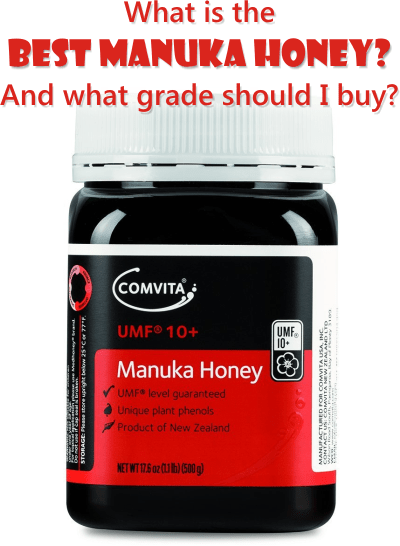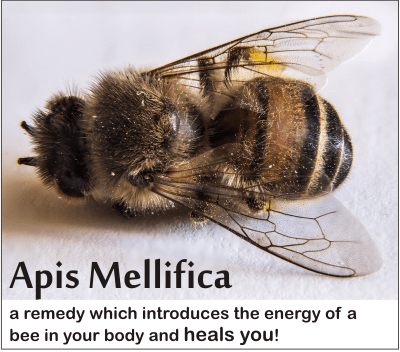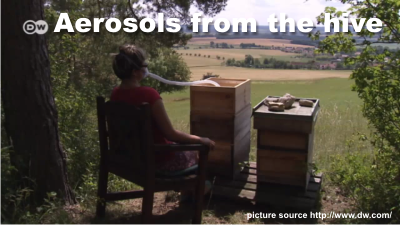Manuka honey fights influenza virus. It’s efficient and has zero side effects.
It’s hard to find the best treatment. Flu virus is mutating all the time and synthetic drugs can’t keep up. But a combination of natural products (even with some drugs to ease severe symptoms like fever) can be the right choice.
Fall has come with its ugly winds, low temperatures, colds and flu. The season of viruses. Their world. Influenza viruses are a serious threat to human health and cause thousands of deaths annually.
These days, there is no TV channel that doesn’t drive you crazy with flu vaccines. If only it were that easy!
But it is not. Vaccines are a controversial subject. Some people say it worked for them, while others swear they hadn’t been sicker in their entire life as they were after getting this vaccine. Their stories are somewhere between tragic and hilarious and instead of helping you make a decision, they only confuse you more.
And of course, it’s worth mentioning its hidden side effects, some not even that hidden as they are mentioned on the medical leaflet. But if a bad thing happens to 1 in 500,000, what person believes is going to be that number 1? Nobody. “Bad things happen to others, not to me.”
Vaccines contain chemicals that are not good for our bodies. Aluminum, mercury, pesticides, even embalming substances, and so many others have been found in their composition. It’s risky. A person needs to first test the already existing levels of aluminum in his body to be sure he doesn’t exceed the limit the body can handle.
On the other hand, coming back to vaccines’ efficiency, despite the fact that they are produced after an improved and updated formula, they are still one step behind the current viruses. Because they are continually adapting and mutating, becoming superviruses with every season, exceeding the range covered by current vaccines.
The good news is that viruses, like any other microbe, cannot develop resistance to natural products. There are natural products able to fight any supervirus that sticks its ugly head out of all the chemicals we put in ourselves. And one natural product that can help the body fight viruses is honey. Honeys with high antioxidant power, such as buckwheat honey, blueberry honey, strawberry tree honey, blackberry honey, chestnut honey, heather honey or manuka honey.
Natural antioxidants in honey. Do we really need antioxidant supplements?
Manuka honey kills flu viruses
• The study Anti-influenza Viral Effects of Honey In Vitro: Potent High Activity of Manuka Honey conducted by Ken Watanabe from Nagasaki University, Japan, and published in 2014, evaluated the anti-influenza viral activity of honey from various sources.
Theory says that influenza viruses are enveloped, negative-strand RNA viruses with a segmented genome and belong to the Orthomyxoviridae family. Two subtypes of the influenza virus A and B cause influenza in humans. Influenza A virus mutates easily, thereby often resulting in the emergence of new antigenic variants of each subtype.
In 1997, it was H5N1, a highly pathogenic avian influenza viruses, in 2009 it was the pandemic virus H1N1, and recently, human infection with the avian influenza virus (H7N9) has been reported. And though anti-virus drugs were made, they have side effects and the viruses gain resistance rapidly.
“Natural products such as microbial metabolites and medicinal plants offer great promise as potentially effective
novel antiviral drugs”. There are agents isolated from natural products that proved its efficiency:
– polyketide leptomycin B from Streptomyces spp.
– polyphenols pentagalloylglucose (PGG) and -epigallocatechin-3-gallate (EGCG) from Phyllanthus emblica L. (Indian gooseberry) and green tea, respectively,
– the alkaloid -thalimonine from Thalictrum simplex L.
– valtrate from Valerianae Radix and 10-acetoxychavicol acetate (ACA) from the roots of Alpinia galanga;
– Alchemilla mollis extracts suppress the growth of influenza virus because of its virucidal activity.
The downside of these products is that they are toxic.
Natural raw honey is antibacterial and antifungal.
Studies say that honey shows broad-spectrum activity against gram-positive and gram-negative pathogenic bacteria and fungi, including methicillin-resistant Staphylococcus aureus (MRSA), Shigella sonnei, Helicobacter pylori, and Candida albicans.
These activities are attributable to its osmolarity, low pH, hydrogen peroxide (H2O2), phenolic acids, and flavonoids. (see What gives honey its antimicrobial power?)
But studies have also shown that honey also exhibits antiviral activities against rubella virus (23) and varicella-zoster virus (VZV). It is also used to treat recurrent herpes simplex lesions (propolis is also recommended).
The study cited above investigated the anti-influenza viral activities of natural raw honey and came to a favorable conclusion. The researchers used different types of honey:
Manuka (UMF15+), buckwheat (Fagopyrum esculentum; sobabuckwheat), kanro (honeydew), acacia (Robinia pseudoacacia), and renge (Astragalus sinicus) honeys.
The results indicate that manuka honey has the strongest anti-influenza viral activity among the honey samples tested. Even more, the data suggested that manuka honey was more effective against influenza virus than against VZV (varicella-zoster virus) or bacteria.
Buckwheat honey exhibited the second highest anti-influenza viral activity (probably due to its high content in the flavonoid rutin). The flavonoid chrysin from acacia honey has anti-influenza viral activity, though it doesn’t have antimicrobial activity against pathogenic bacteria or yeast. (See Why is honey so valuable? What are polyphenols and what are they good for?)
Although manuka honey was less potent than zanamivir against influenza virus, the study showed that a combined use of anti-influenza drugs with manuka honey resulted in synergistic anti-influenza virus effects. (also see Take your medicine with honey. It will enhance its power!
The same synergy is observed between antibiotics and manuka honey in the inhibition of MRSA.
Though the study was done on H1N1, the virucidal activity of natural products has a broad spectrum, so manuka honey is expected to be effective against H5N1 and H7N9 viruses, or other expected future viruses.
The results obtained in the study showed that honey, in general, and particularly manuka honey, has potent inhibitory activity against influenza virus.
• Charyasriwong S et al. evaluated in a study from 2015 the anti-influenza viral activity of MGO, present in high amounts in manuka honey and its potential in combination treatments with antiviral drugs (neuraminidase inhibitors).
MGO showed promising activity against various influenza strains. A synergistic effect of MGO and oseltamivir was also observed against the oseltamivir-resistant virus.
Conclusion: The results of the study show that MGO has potent inhibitory activity against influenza viruses and also enhances the effect of neuraminidase inhibitors (antiviral drugs). Thus, the co-administration of MGO and neuraminidase inhibitors should be considered for the treatment of influenza virus infections.
Other supplements useful to fight the influenza virus and restore your strength include:
Vitamin D3, Iodine from Kelp., ATP-20
, Colloidal Silver
, Olive Leaf Extract, Oregano Essential Oil, Propolis extract. And, of course, Vitamin C, not just any but Vitamin C in liposomal form. It’s best absorbed.
How to take manuka honey to fight the flu?
UMF 10+, or 15+ are recommended. Even a higher grade. 3 tablespoons per day, with 30 minutes before meals. Or mix it in a tea and add lemon juice. Take it for 10 days. And then, you can reduce the dose.
Read more about grades and real, genuine manuka honey.





